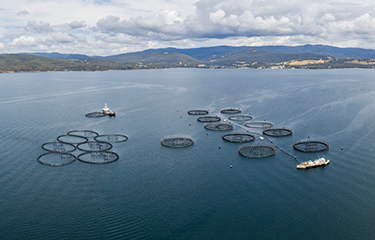Australia’s aquaculture sector is now the largest segment of the country’s seafood industry. It grew 10 percent in 2019 to 2020, despite the COVID-19 pandemic, according to the country's latest fisheries and aquaculture statistics.
Seafood Industry Australia (SIA) said the growth recorded by the sector despite the hardships brought about by the pandemic is a cause for celebration.
“It’s no secret it’s been a hard 18 months for the Australian seafood industry. However, the release of this report shows the industry is steadily moving forward and that needs to be celebrated,” SIA CEO Veronica Papacosta said in a statement.
However, the Australian government's 2020-21 projections show the country's fisheries and aquaculture production will fall by the end of the year, due mainly to disruptions to the domestic and international marketplaces caused by COVID-19. Earlier this year, China instituted a ban on the import of live Australian lobsters, causing a major disruption to Australia's lucrative rock lobster fishery.
Domestic seafood consumption in Australia has also decreased, the report stated, dropping to 12.4 kilograms per person, down from 13.5 kilograms per person from 2018 to 2019. Imported seafood products accounted for 62 percent of consumption, down from 66 percent in previous years.
Papacosta said Australia’s aquaculture sector maintained steady growth in the past year, with the sector’s gross value of production improving 10 percent in 2019-2020. Tasmania’s growing Atlantic salmon industry has contributed to the growth of the sector, which is now worth 35 percent of national fisheries and aquaculture GVP.
“Our aquaculture sector has a bright future as it continues to set international benchmarks by providing fresh, high-quality, sustainable seafood year-round, while meeting and exceeding regulatory requirements,” she said.
The report found Australia’s fisheries and aquaculture GVP was valued at AUD 3.1 billion (USD 2.3 billion, EUR 1.9 billion) in 2019-2020, which represents an AUD 258 million (USD 188 million, EUR 159 million), or 8 percent, downward revision from the December 2019 outlook.
The projection also estimates that the GVP of the Australian seafood sector as a whole is expected to decline to AUD 2.9 billion (USD 2.1 billion, EUR 1.8 billion) in 2020-2021, a 6 percent decrease from 2019-2020, before commencing a slow recovery.
The sector will be aided by the recent announcement from the Australian government that it has extended its IFAM program of emergency air freight support through June 2022.
“On behalf of our members and the entire Australian seafood industry, SIA would like to thank the federal government for extending the IFAM until June 2022,” SIA CEO Veronica Papacosta said.
The IFAM extension, SIA said, will provide the needed assistance to exporters who rely on air freight to send their products abroad.
“Typically Australian seafood exports are carried in the cargo hold of commercial aircraft, but with few international passenger flights under COVID-19 restrictions, the majority of outbound flights were canceled, which saw our transport routes disappear,” Papacosta said. “Restoring these supply chains has been vital to industry maintaining relationships with customers around the world, so we can continue to deliver our high-quality Australian seafood to every corner of the globe long after IFAM ends and COVID-19 has passed.”
The Australian government will further support Australian jobs and businesses by providing an additional AUD 260.9 million (USD 190.3 million, EUR 161.4 million) to “maintain the critical air-freight links between Australian businesses and their international customers, which is critical to maintaining the flow of exports and imports," it said.
The extension will allow Australia’s wild-catch fishers and aquaculturists to deliver an estimated AUD 3 billion (USD 2.2 billion, EUR 1.9 billion) worth of products to international markets including Japan, Singapore, and South Korea, Papacosta said.
Photo courtesy of Juergen_Wallstabe/Shutterstock







